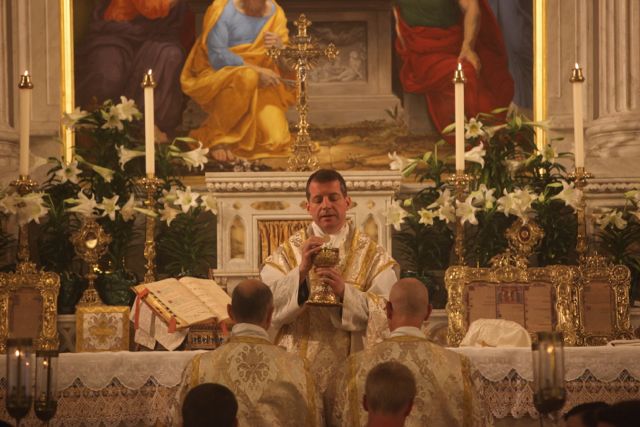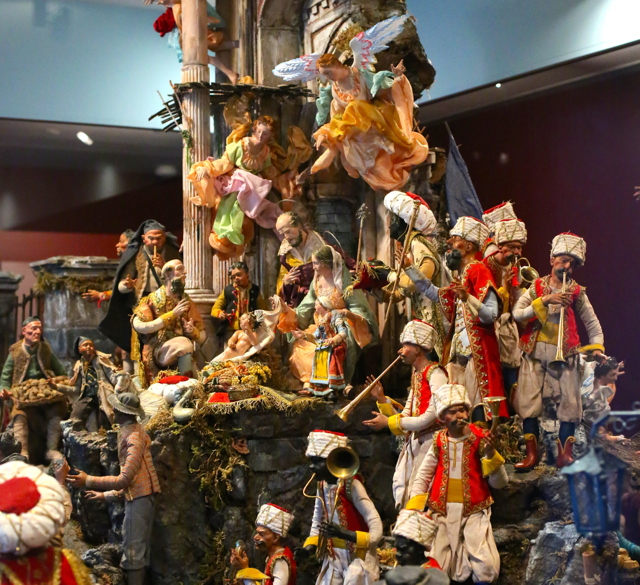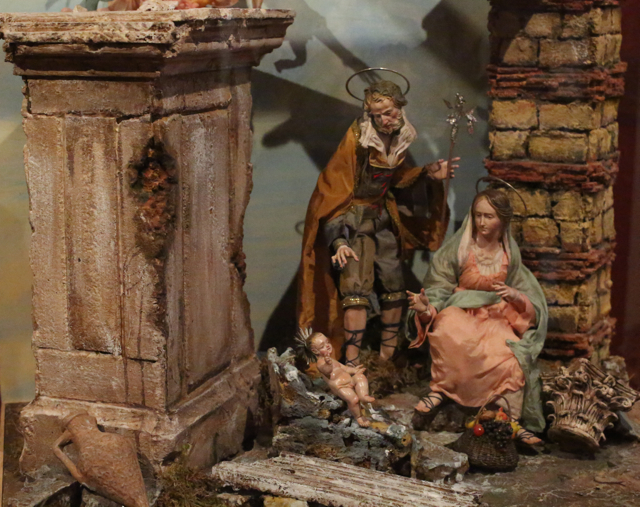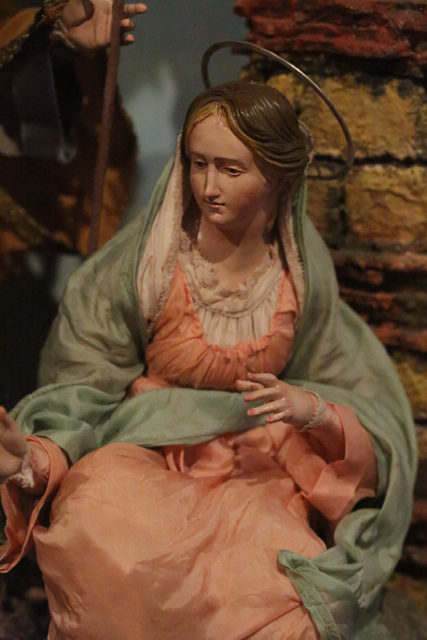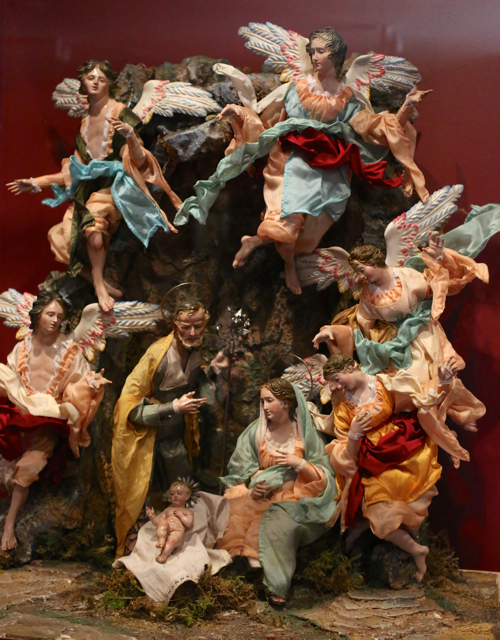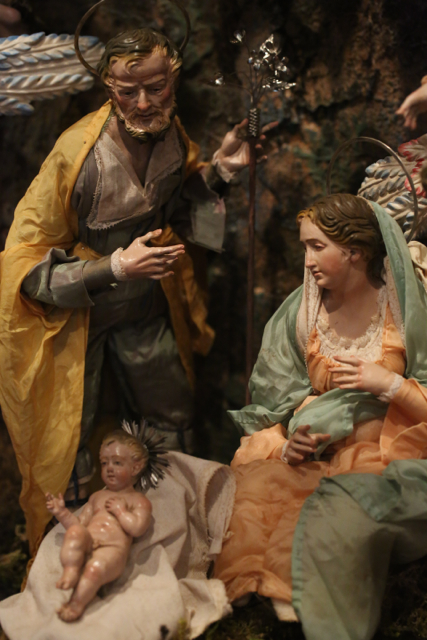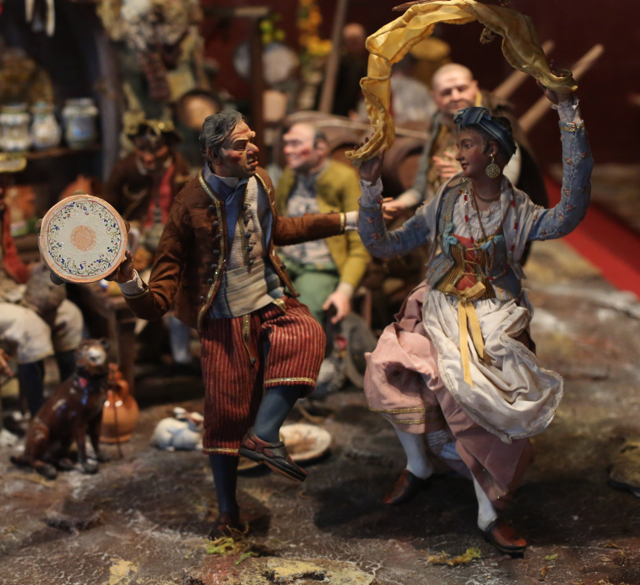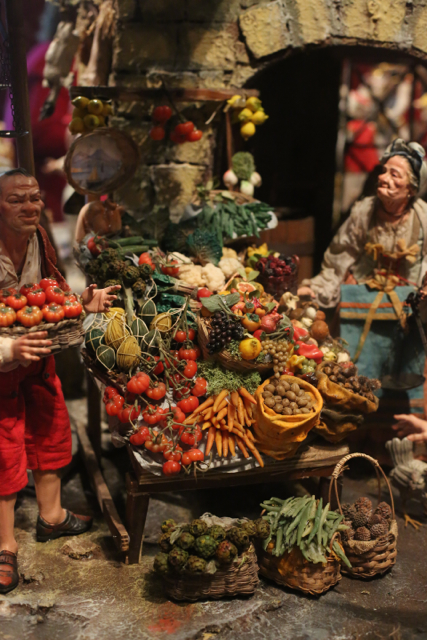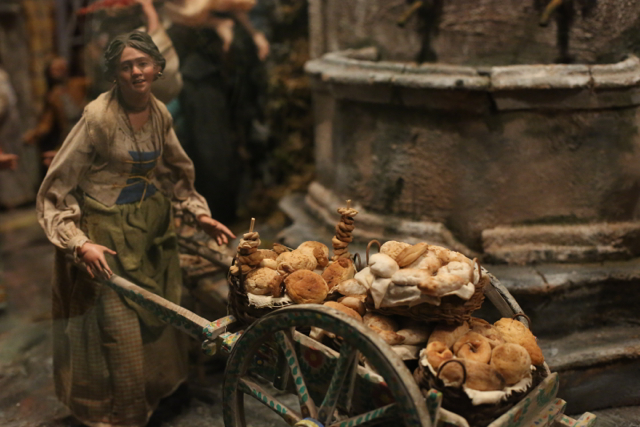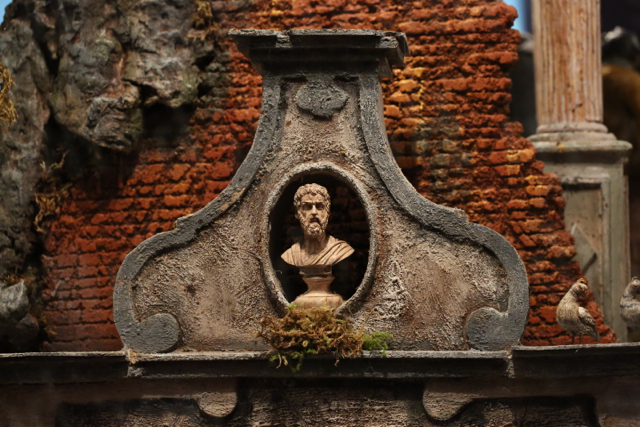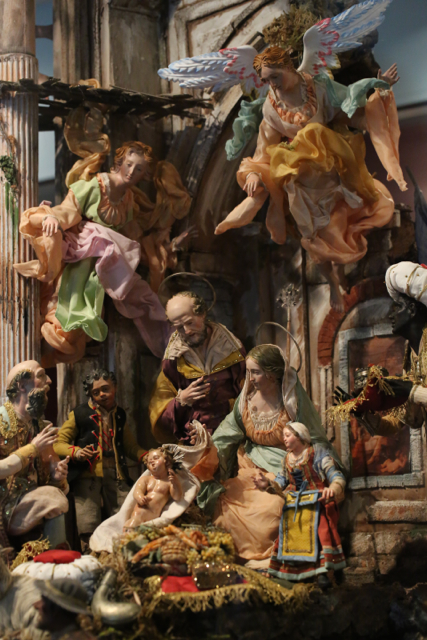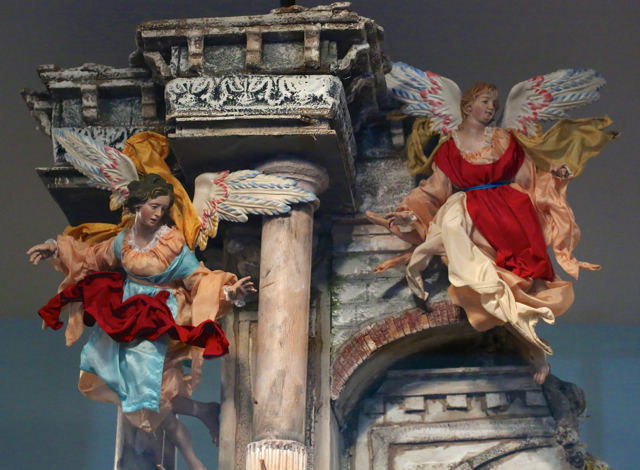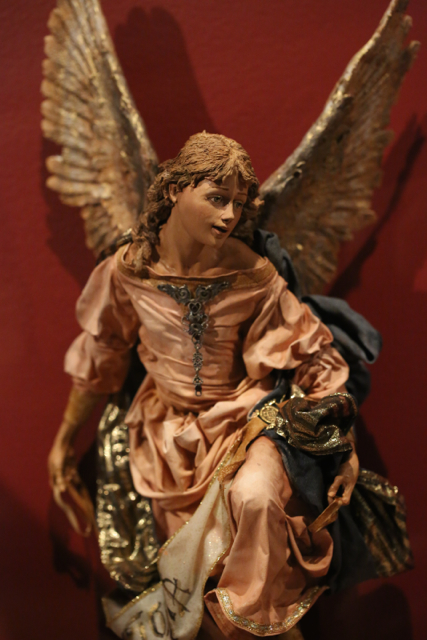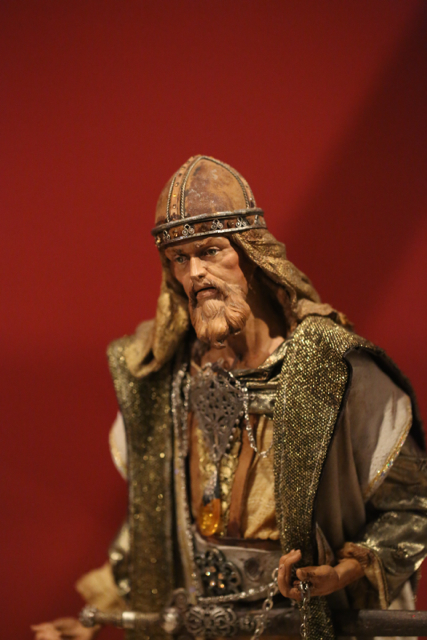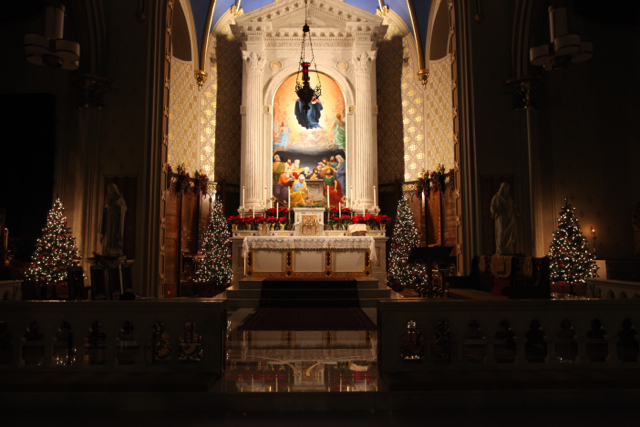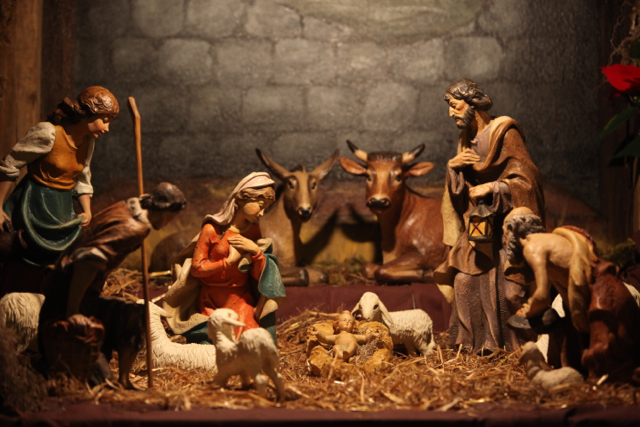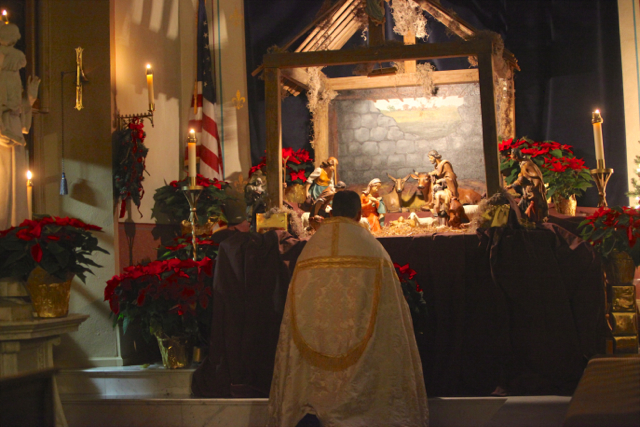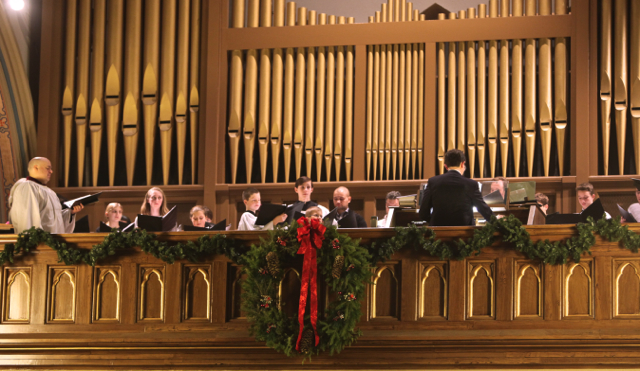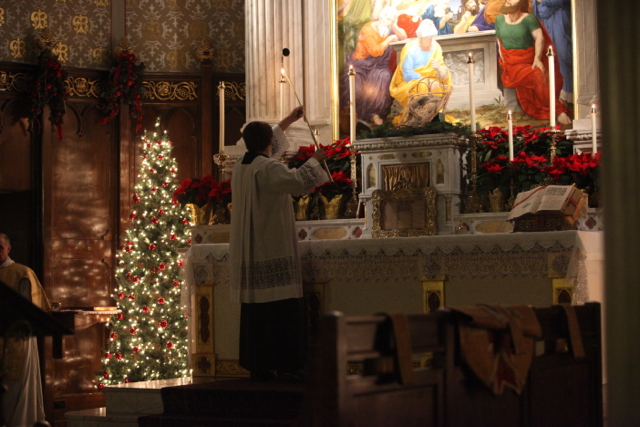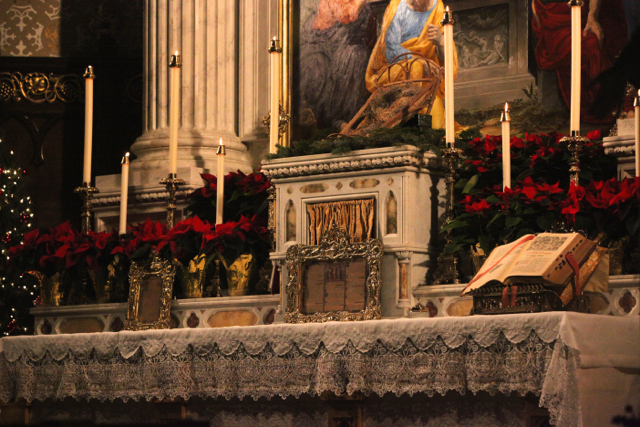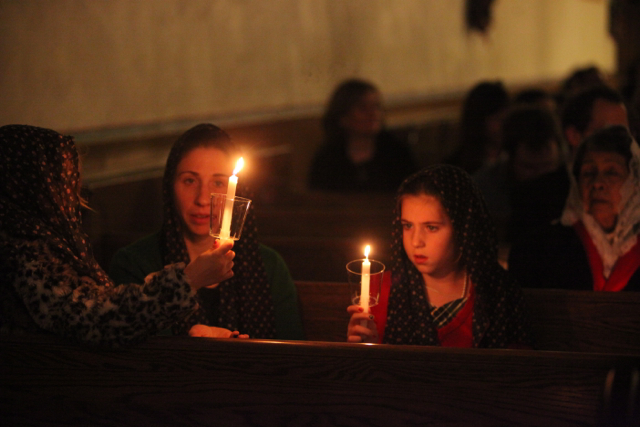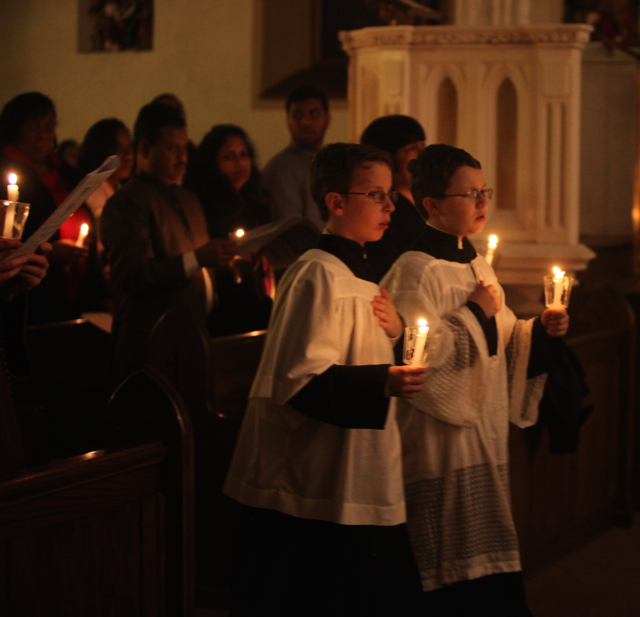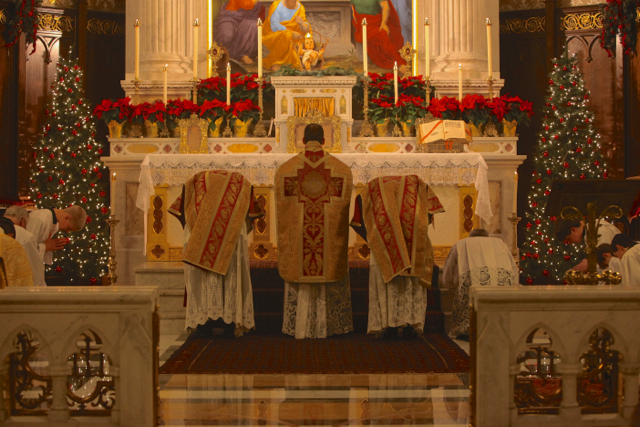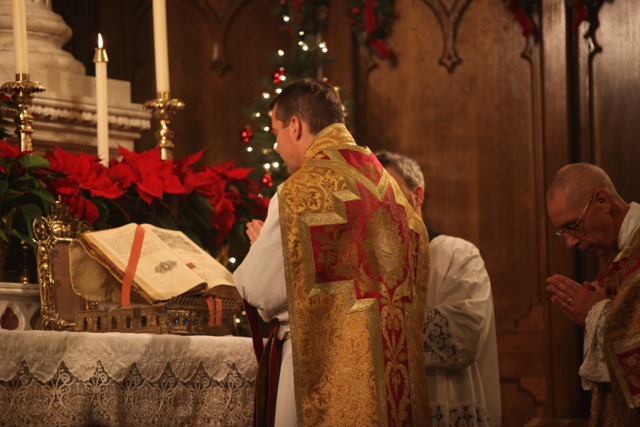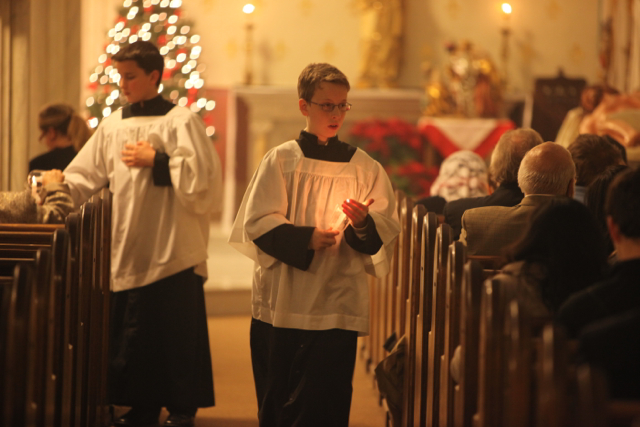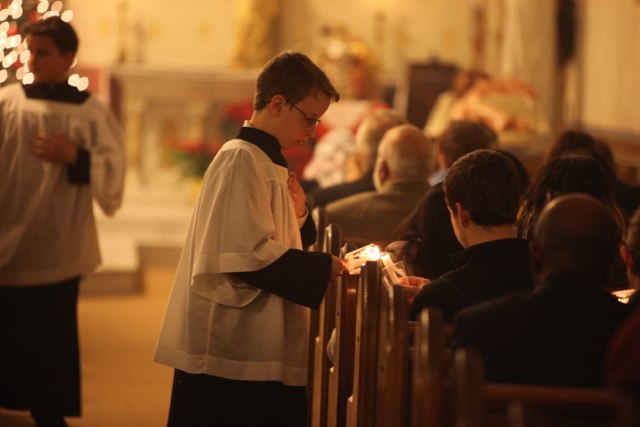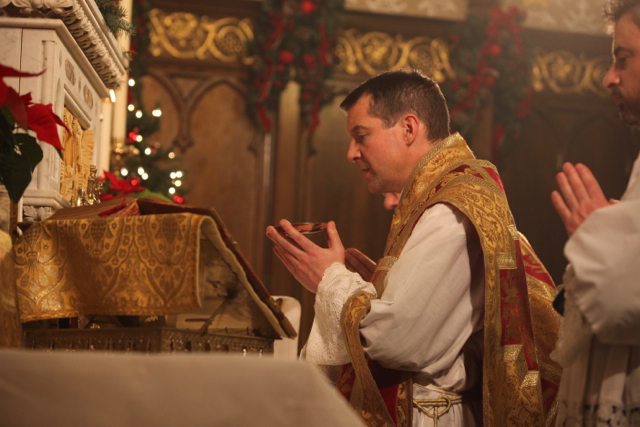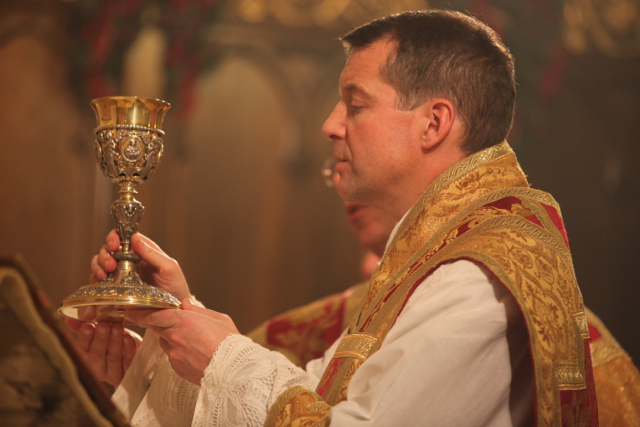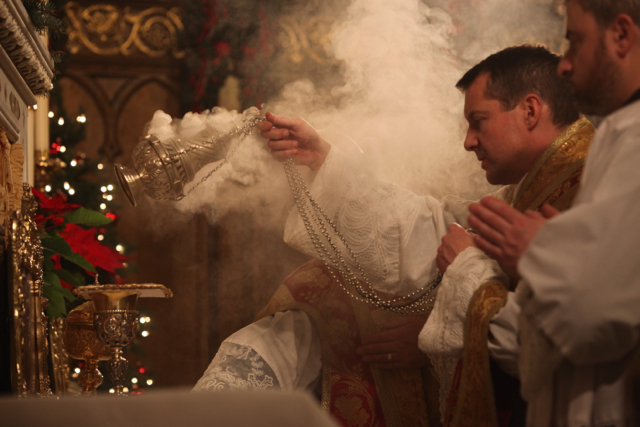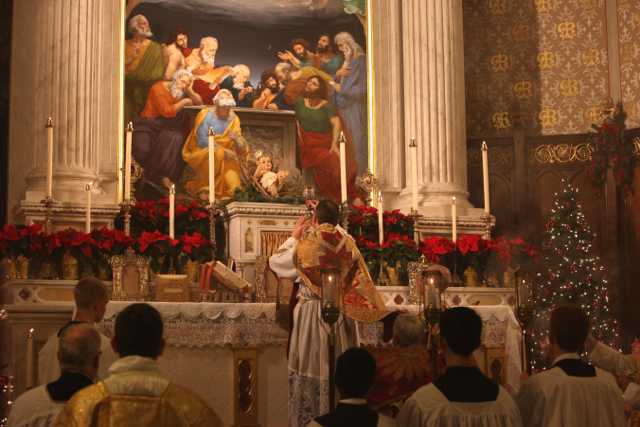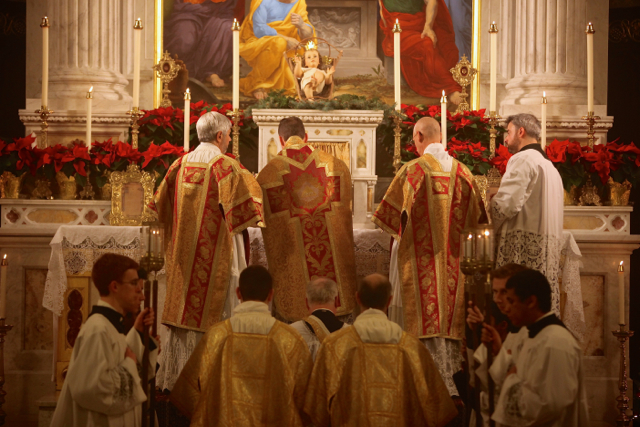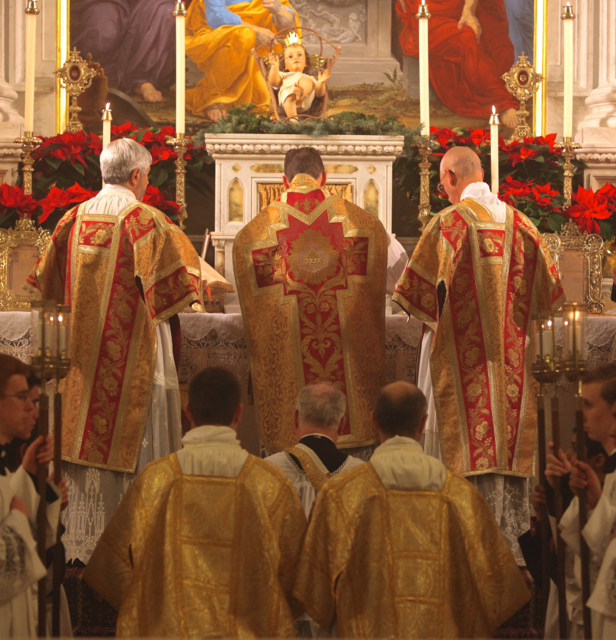14 May
2015
Martin Mosebach and Luc Perrin Speak at Holy Innocents Church
Posted by Stuart Chessman Published in Photos30 Apr
2015
N.B. The photos and information for this article are courtesy of the website http://magnagrece.blogspot.com.
Last Thursday, April 23th, members of the U.S. Delegation of the Sacred Constantinian Military Order of Saint George gathered at Holy Innocents Church on their patronal feast day for a Solemn Mass. The celebrant and homilist was Cav. Rev. Msgr. Joseph F. Ambrosio, pastor of Our Lady of Mt. Carmel in Newark. Saverio Mercadante’s (1795-1870) Mass for Three Voices was performed by the church choir
.

Members of the Order venerate the first-class relic of Saint George

His Excellency Cavaliere John M. Viola, Delegate of the Sacred Constantinian Military Order of Saint George, addresses the audience
Hon. Cav. Pasquale Menna, Esq. and His Excellency Cav. John M. Viola, Delegate of the United States Delegation
21 Apr
2015
Tonight Council 46 of the Knights of Columbus and the Saint Ann Club of Norwalk honored the altar servers in the Catholic parishes of Norwalk, CT at a dinner and award ceremony. As you can see, a large group showed up from St. Mary’s Norwalk.
15 Apr
2015
Solemn Mass for Low Sunday (Mercy Sunday) at Holy Name of Jesus Roman Catholic Church.
Fr. James Massa, celebrant. Thanks to Arrys Ortanez for the photos.
13 Apr
2015
Yesterday Father Markey said his final Masses as pastor of St. Mary Church, Norwalk. He is stepping down to study for an advanced degree in philosophy. Our pictures show his final 9:30 Solemn High Mass with the Knights of Columbus in attendance. Stephen Genovese was deacon and Bill Riccio, subdeacon.
In the afternoon, parishioners flocked to a reception in the church hall to say good-bye to Father Markey and receive his blessing. The line snaked around the hall.

2 Apr
2015
28 Mar
2015
St. Stanislaus in New Haven – a Photographic Essay.
Posted by Stuart Chessman Published in Essays, PhotosSt. Stanislaus in New Haven – a very active Polish ethnic parish with a magnificently preserved church. Since 2009 it has been home to the St. Gregory Society, the pioneers of the regular celebration of the Traditional mass – with complete ceremony and music – in this part of the world. I recently was fortunate to be granted the opportunity of taking pictures of the interior.
(Above) St. Stanislaus, founded in 1901, has been a Vincentian parish since 1904. The current church was dedicated in 1913.
A magnificent high altar – and an abundance of statuary. The old churches of the Germans, Poles and Slovaks so often have particularly rich and colorful appointments.

(Above) One of the Stations of the Cross.
An elaborate program of paintings covers the entire interior. I am told these works were created over the years by two local artists who filled the church (and the rectory!) with an almost baroque superabundance of art.
(Above and below) The art of St. Stanislaus church celebrates not only the realm of the sacred but also the secular history of Poland. Here a king and queen of Poland responsible for the first union between Poland and Lithuania at the end of the 14th century. (Queen Jadwiga was canonized in 1997).
As one might expect,there is also magnificent stained glass.
Madonnas of Vilna, Lithuania (above) and of Poland(below). (When this church was built Vilna – now Vilnius – was considered a Polish town.)
In addition to the “standard” sacred topics so often found in the stained glass imported from Germany and Austria up to the 1930’s, the windows of this church also depict many unusual and specifically Polish subjects, including a number of Polish saints. Not all of these local patrons are ethnic Poles. Below, the martyr St. Josaphat with the vestments and pontifcals of a Greek bishop, including the trikir and crosier with serpents. He was Ukrainian but lived and died in the vast Polish-Lithuanian state of the early 17th century. Beside him stand St. John Cantius (patron of the well-known Traditional parish in Chicago).
The Roman Catholic Church currently may be embracing pacifism and praising the benefits of “secularism” and the separation of Church and state as currently practiced in the United States and Western Europe. Poles know better, living as they do in an exposed geographic situation open to attack by foes often rabidly hostile to the Catholic faith and having survived generations of repression from a variety of oppressors. For them, history clearly shows there is so often a duty to fight for one’s faith and country. And it was the ineradicable links between the Faith and the Polish nation that enabled Poland to survive apparently insuperable odds. Above, I believe this very unusual window shows St. Hedwig or Jadwiga (who wasn’t Polish) giving a blessing to her husband Henry the Pious before he rode out to meet death in battle at hands of the Mongols in 1242. Below, king Jan Sobieski receiving communion before one of his battles (perhaps Vienna in 1683)
7 Jan
2015
Epiphany at St. Mary’s Church, Greenwich, Connecticut
Posted by Stuart Chessman Published in Masses, PhotosSolemn High Mass celebrated by Fr. Cyprian La Pastina, the pastor of St. Mary’s. The music included a mass setting by Michael Haydn.
1 Jan
2015
The Knights of Columbus Museum in New Haven has made in recent years a valuable contribution to the preservation and dissemination of the Catholic art of the Christmas season. The latest in their series of exhibits of Christmas creches deals with Italy – where the tradition was created by St Francis of Assisi and where it reached its most elaborate form.
The focus of this exhibit is on the manger scenes of Naples – the most elaborate of all. Above, the Holy Family amidst the ruins of the pagan world.
Most of the Neapolitan exhibits come from the firm of Bottega D’Arte Presepiale Cantone & Costabile, Naples, which works in the style of the 18th century. Antonio Cantone and his firm created the main creche on exhibit (photo at the beginning of this article)in about a year of work. He has a more ancient, even medieval, understanding of his work as an artist: “I am using art to express my religion.”
(Above and below) At its most elaborate the Neapolitan creche places the coming of Christ in a minute depiction of the world of the everyday life the people: their occupations, their pleasures, their food and their different social classes. As the Byzantine rite proclaims:”Christ is in our midst!”
The exuberance, naturalism and symbolic content of Baroque art – the last great manifestation of Christian art to succeed in shaping an entire culture and which survives even in our day in the Neapolitan creche- – seems at times to have perplexed whoever wrote the otherwise informative notes to this exhibit. We find there references to a supposed tension between the elaborate creche scenes and the simplicity of the Holy Family; the scenes of the people are supposedly not representative of the misery of the people of that time. As if that were the purpose of these figures! Ancient ruins are depicted in manger scenes, according to this source, because they lay about everywhere in Campania and, moreover, the 18th century craze for Pompeii and its art was getting underway.
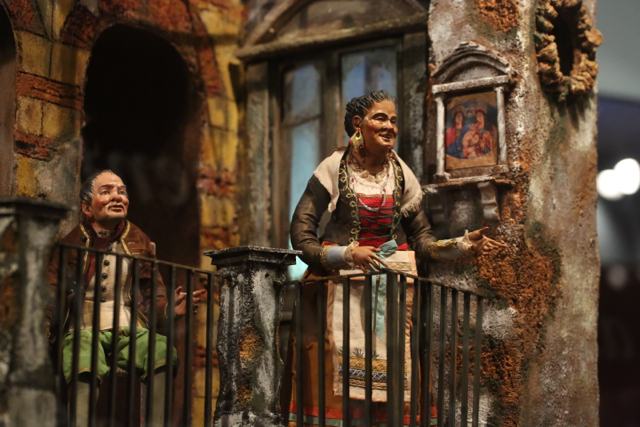
(Above) The innkeepers who excluded the Holy Family (including an 18th century holy image on the wall!). (Below) Once again the theme of the supersession of the ancient pagan world by the coming of Christ.
(Above and below) In contrast to the preceding genre scenes is the outpouring of the Divine encountered in the presence of the Holy Family and angels.
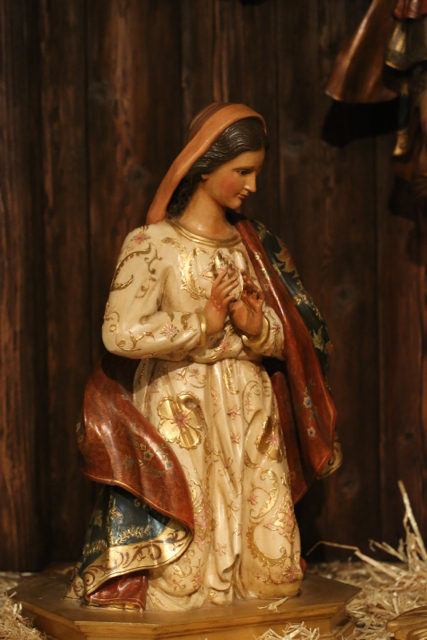
(Above) the Museum also is showed a selection of creches from other regions and cultures that take up the baroque theme. Here is a life size figure carved by Agustin Parra in Guadalajara, Mexico
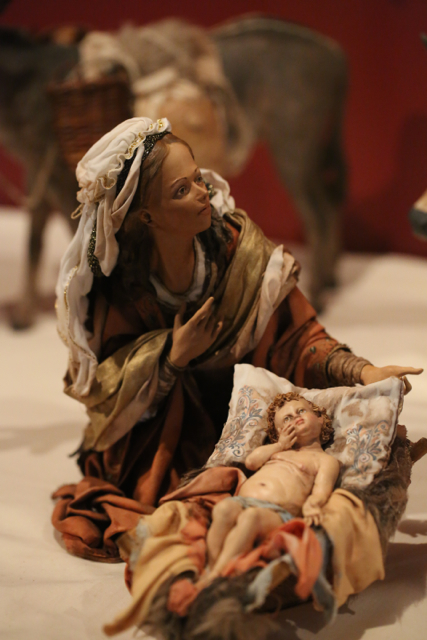
(Above and below) Figures from a Nativity scene created by a Sicilian artist.
An exhibit at the Knights of Columbus Museum – 1 State Street, New Haven, Connecticut. Now throughout February 1! See HERE for further information and directions.
For the Firm of Arte Presepiale Cantone et Costabile see HERE.
25 Dec
2014
Solemn High Mass at Midnight at St. Mary’s Norwalk
Posted by Stuart Chessman Published in Masses, PhotosMidnight Mass at St. Mary’s, Norwalk. The celebrant was Fr. Greg Markey; Steve Genovese was the deacon and Fr. Richard Cipolla the subdeacon.
(Above and Below) Before the Mass and the singing of carols, Fr. Markey led the congregation in the recitation of the rosary before the manger scene.
Mr David Hughes was the director of music. (Above) Carols were sung before the mass.
(Below) Lighting the candles.
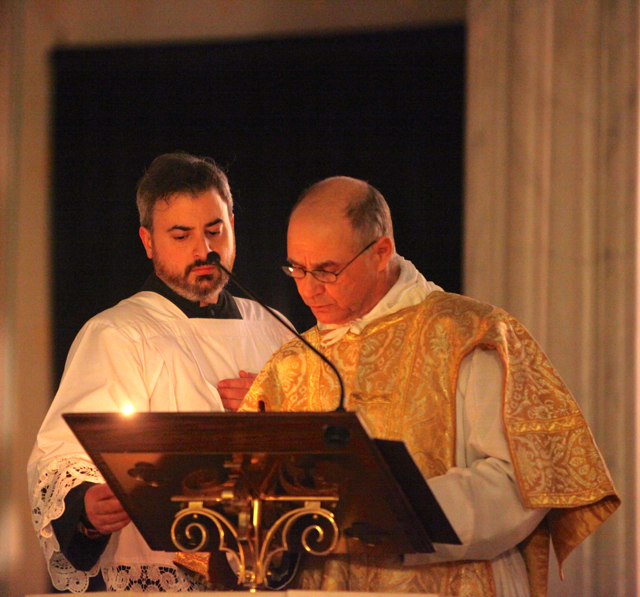
(Above) Reading by Mr. William Riccio of the Proclamation of the Birth of Christ.
(Above and below) Candles at the entrance procession.

(Above) Placing the statue of the Christ Child in the manger.
(Above and below) Lighting of candles at the Gospel.
The offertory.
Contact us
Register
- Registration is easy: send an e-mail to contact@sthughofcluny.org.
In addition to your e-mail address, you
may include your mailing addresss
and telephone number. We will add you
to the Society's contact list.
Search
Categories
- 2011 Conference on Summorum Pontifcum (5)
- Book Reviews (95)
- Catholic Traditionalism in the United States (24)
- Chartres pIlgrimage (17)
- Essays (176)
- Events (670)
- Film Review (7)
- Making all Things New (44)
- Martin Mosebach (34)
- Masses (1,343)
- Mr. Screwtape (46)
- Obituaries (15)
- On the Trail of the Holy Roman Empire (22)
- Photos (347)
- Pilgrimage Summorum Pontificum 2021 (7)
- Pilgrimage Summorum Pontificum 2022 (6)
- Pilgrimage Summorum Pontificum 2023 (4)
- Sermons (79)
- St. Mary's Holy Week 2019 (10)
- St. Mary's Holy Week 2022 (7)
- St. Mary's Holy Week 2023 (7)
- St. Mary's Holy Week 2024 (6)
- Summorum Pontificum Pilgrimage 2024 (2)
- The Churches of New York (198)
- Traditionis Custodes (49)
- Uncategorized (1,369)
- Website Highlights (15)
Churches of New York
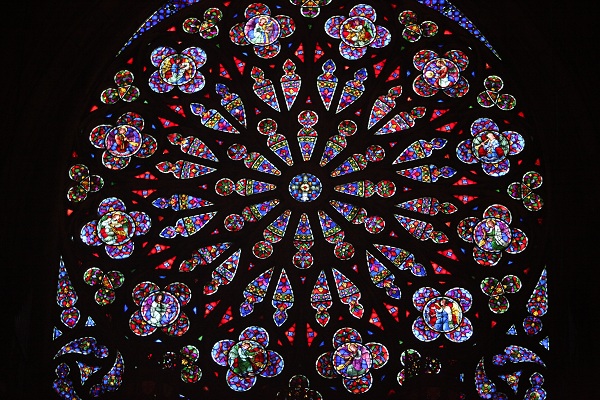
Holy Roman Empire
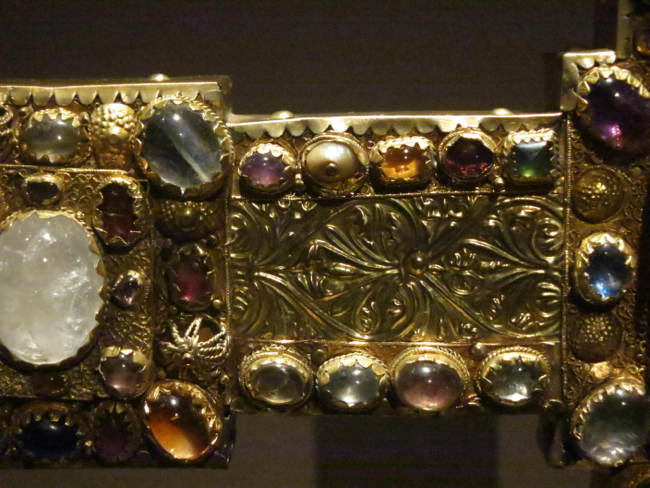
Website Highlights
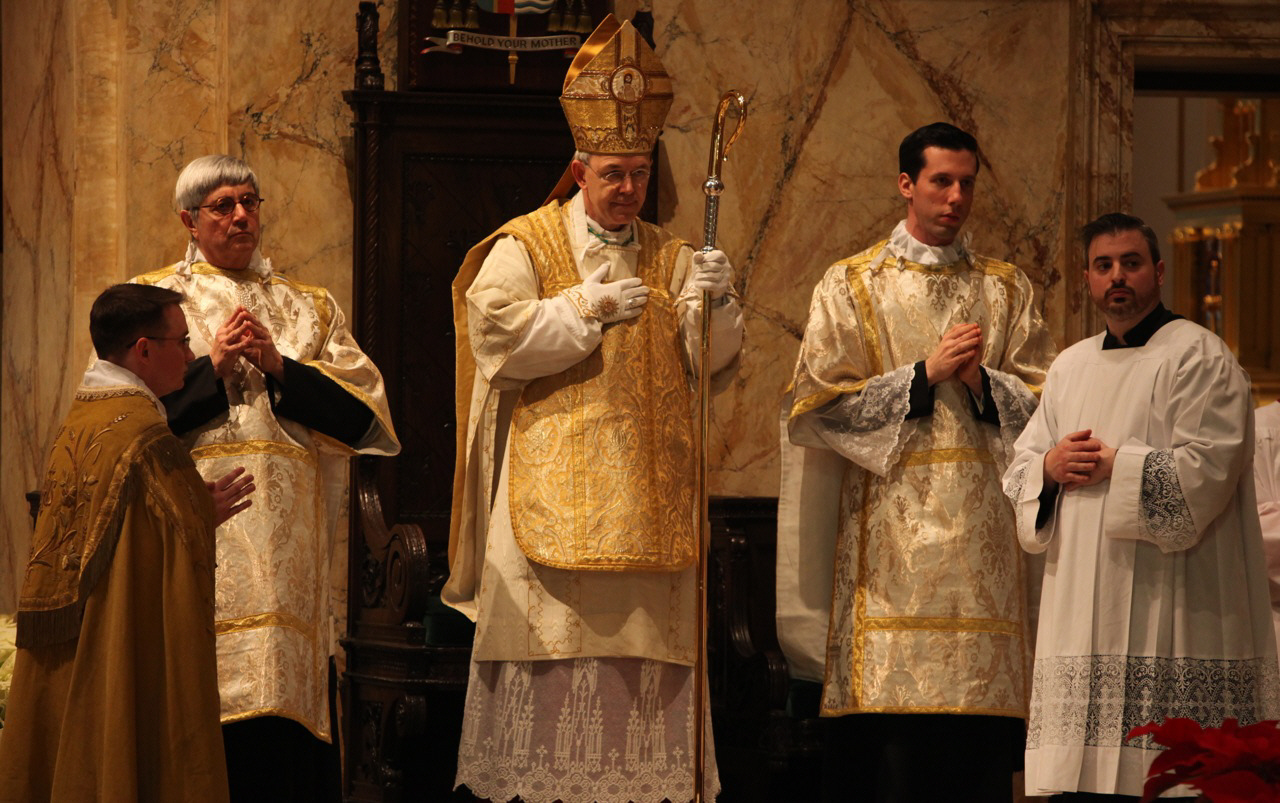
Archives
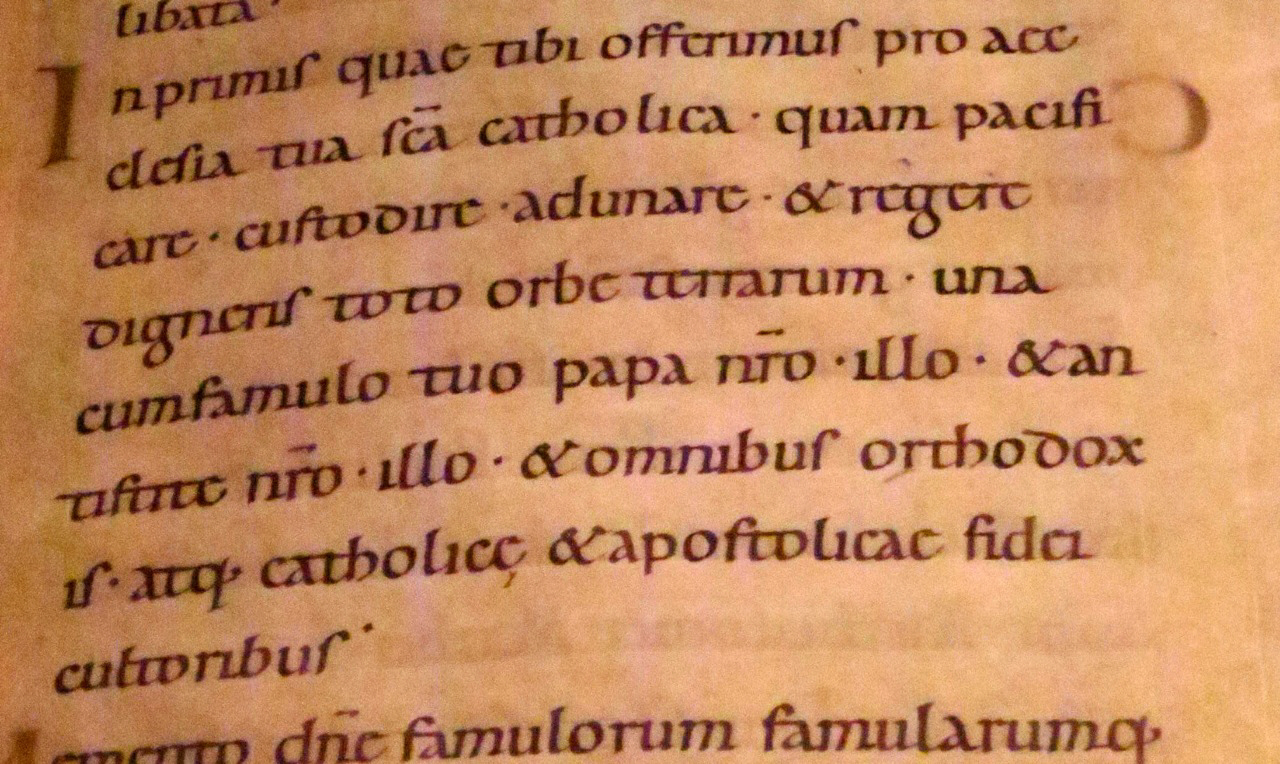
[powr-hit-counter label="2775648"]














![IMG_0434[1]](https://sthughofcluny.org/wp-content/uploads/2015/04/140.jpg)
















